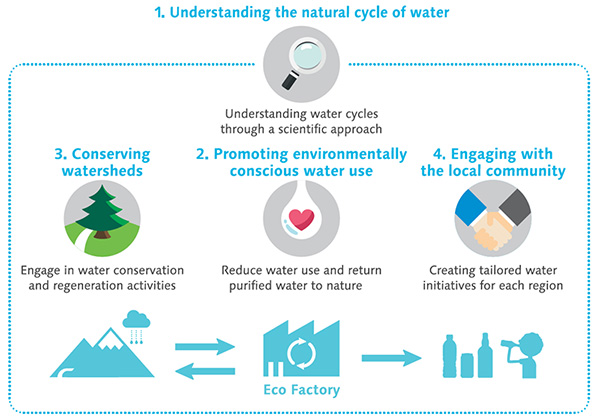Table of Contents
Dining outdoors, whether beneath the open sky or on a charming patio, is an experience cherished by many. But as our awareness of environmental issues grows, so does the importance of adopting sustainable practices in every aspect of our lives, including outdoor dining. In this article, we explore the eco-friendly initiatives and practices that are helping outdoor restaurants make a positive impact on the environment while still offering delightful dining experiences.
As the allure of dining al fresco continues to captivate us, it’s crucial to align our outdoor dining experiences with a growing environmental consciousness. Outdoor restaurants are now at the forefront of embracing sustainable practices to preserve the beauty of nature while offering delightful dining experiences. Let’s delve deeper into the eco-friendly initiatives and practices that are making a positive impact on both outdoor dining and the environment:
1. Sustainable Sourcing: Eco-conscious outdoor restaurants are meticulous about the origin of their ingredients. They prioritize locally sourced, organic, and seasonal produce. By doing so, they reduce the carbon footprint associated with food transportation, support local farmers, and ensure fresher, tastier dishes.
2. Zero-Waste Efforts: Many outdoor dining establishments are committed to minimizing waste. This includes initiatives such as composting food scraps, using reusable tableware, and minimizing single-use plastics. Some restaurants have even adopted closed-loop systems where waste is repurposed or recycled on-site.
3. Renewable Energy: To power outdoor lighting, heating, and cooking equipment, sustainable restaurants harness renewable energy sources like solar panels and wind turbines. These technologies reduce reliance on fossil fuels and lower energy costs in the long run.
4. Water Conservation: Water-efficient practices, such as low-flow faucets and drought-tolerant landscaping, help outdoor restaurants reduce water consumption. Rainwater harvesting systems are also becoming more common, ensuring that every drop is put to good use.
5. Thoughtful Design: Eco-friendly outdoor dining spaces are often thoughtfully designed to optimize natural light and ventilation. This reduces the need for artificial lighting and air conditioning, saving energy and creating a comfortable ambiance for diners.
6. Eco-Friendly Menus: Restaurants are incorporating sustainability into their menus by featuring plant-based dishes, reducing meat consumption, and highlighting sustainable seafood options. These choices not only promote environmental responsibility but also cater to diverse dietary preferences.
7. Responsible Seafood Sourcing: Outdoor seafood restaurants often prioritize sustainably sourced seafood. They partner with organizations like the Marine Stewardship Council (MSC) to ensure that the seafood they serve is harvested responsibly, preserving marine ecosystems.
8. Educating Diners: Many outdoor restaurants take the opportunity to educate diners about their sustainability efforts. This not only raises awareness but also encourages guests to adopt more eco-friendly dining practices in their own lives.
9. Support for Local Ecosystems: Some outdoor restaurants actively contribute to local ecosystem preservation. This may involve planting native trees, creating pollinator-friendly gardens, or participating in wildlife habitat restoration projects.
10. Community Engagement: Sustainable outdoor restaurants often engage with their local communities to promote environmental awareness and education. They may host eco-themed events, workshops, or collaborations with environmental organizations.
In conclusion, dining outdoors can be a harmonious experience that celebrates both culinary delights and nature’s beauty. By adopting eco-friendly initiatives and practices, outdoor restaurants are not only reducing their environmental impact but also setting an inspiring example for the dining industry and diners alike. They prove that sustainability and exceptional dining experiences can go hand in hand, creating a brighter and more responsible future for outdoor dining.
Don’t stop here; you can continue your exploration by following this link for more details: Responsible Sourcing
Sustainable Sourcing of Ingredients
One of the most fundamental steps towards eco-friendly outdoor dining is sourcing ingredients responsibly. Many outdoor restaurants are choosing to partner with local farmers and suppliers who practice sustainable agriculture. This reduces the carbon footprint associated with transporting food long distances and supports the local economy. Seasonal and organic produce is often featured prominently on menus, promoting fresher and healthier dining options.
Embracing eco-friendly practices in outdoor dining is a conscientious choice that not only benefits the environment but also enhances the dining experience for patrons. Sourcing ingredients responsibly is indeed a pivotal step in this journey towards sustainability. Here’s an extended exploration of why responsible ingredient sourcing is at the heart of eco-friendly outdoor dining:
1. Nurturing Local Communities: Partnering with local farmers and suppliers who practice sustainable agriculture is not only an eco-conscious decision but also a community-building one. It fosters strong relationships between the restaurant and the local producers, creating a symbiotic connection that supports the entire community.
2. Reducing Food Miles: By sourcing ingredients locally, outdoor dining establishments significantly reduce the carbon footprint associated with food transportation. The concept of “food miles” is minimized, as produce doesn’t need to travel long distances to reach the restaurant. This reduction in emissions contributes to a greener planet.
3. Fresher and More Flavorful Food: Locally sourced ingredients often reach the restaurant fresher and in their prime, as they don’t undergo extended journeys. This translates into higher-quality and more flavorful dishes that delight diners’ palates. Seasonal produce, in particular, showcases the authentic taste of each season.
4. Supporting Biodiversity: Sustainable agriculture practices are often accompanied by efforts to protect and promote biodiversity. Local farms that prioritize responsible farming methods contribute to healthier ecosystems, which in turn benefit the environment and future generations.
5. Encouraging Seasonal Variability: Eco-friendly outdoor dining menus often feature seasonal and organic produce as culinary centerpieces. This not only aligns with sustainable practices but also encourages a dynamic and ever-changing menu that reflects the natural rhythm of the local environment.
6. Healthier Dining Choices: Seasonal and organic produce tends to be fresher and more nutritious, offering diners healthier dining options. Patrons can enjoy dishes that are not only delicious but also packed with essential vitamins and minerals, promoting well-being.
7. Education and Awareness: Restaurants that prioritize responsible ingredient sourcing have the opportunity to educate diners about the importance of sustainability in the food industry. This awareness can inspire guests to make eco-conscious choices in their own lives.
8. Adaptability to Local Tastes: Sourcing ingredients locally allows outdoor dining establishments to adapt to the unique flavors and tastes of the region. It can lead to the discovery of indigenous ingredients and traditional recipes that celebrate local culinary heritage.
9. Ethical Considerations: Responsible ingredient sourcing aligns with ethical principles. It ensures that the people involved in food production are treated fairly and compensated appropriately for their efforts. This ethical aspect resonates with socially conscious diners.
10. Competitive Advantage: Eco-friendly practices, including responsible ingredient sourcing, can serve as a competitive advantage in the restaurant industry. Diners increasingly seek out establishments that align with their values, making sustainability a selling point.
Incorporating responsible ingredient sourcing into the ethos of eco-friendly outdoor dining not only contributes to the well-being of the planet but also enriches the dining experience for guests. It celebrates local communities, reduces environmental impact, and showcases the best flavors of each season. It’s a testament to how dining can be a force for positive change in both environmental and culinary spheres.
For a comprehensive look at this subject, we invite you to read more on this dedicated page: Dine On Campus at Cal Poly, San Luis Obispo || Food Sustainability

Farm-to-Table Dining
The farm-to-table movement is gaining momentum in outdoor dining establishments. It emphasizes direct relationships between restaurants and local farms, ensuring transparency in sourcing and reducing the need for extensive packaging and processing. Diners can enjoy meals with ingredients that are often harvested just a short distance away, fostering a deeper connection to the local environment.
The farm-to-table movement is gaining momentum in outdoor dining establishments, and its impact goes far beyond just fresh ingredients. This culinary trend emphasizes direct relationships between restaurants and local farms, ensuring transparency in sourcing and reducing the need for extensive packaging and processing. Diners can enjoy meals with ingredients that are often harvested just a short distance away, fostering a deeper connection to the local environment. Here are some additional facets to explore within this growing movement:
Seasonal Delights: One of the beauties of the farm-to-table movement is that it celebrates the changing seasons. Menus evolve with what’s in season, introducing diners to a variety of flavors and encouraging an appreciation for the ebb and flow of nature’s bounty.
Supporting Local Economies: By partnering with local farmers and producers, restaurants contribute to the vitality of their communities. They help sustain small-scale agriculture and promote economic resilience, all while offering diners a taste of the region’s unique culinary offerings.
Environmental Sustainability: Farm-to-table practices often align with eco-friendly principles. With reduced transportation and packaging, this approach lessens the carbon footprint associated with food sourcing. Many farms and restaurants practicing sustainability also employ organic or regenerative farming methods.
Educational Experiences: Some farm-to-table restaurants take the dining experience a step further by offering educational programs. Guests may have the opportunity to tour nearby farms, learn about agricultural processes, or even participate in cooking classes using locally sourced ingredients.
Menu Creativity: Chefs within the farm-to-table movement are known for their creativity and adaptability. They must work with what’s available, leading to inventive dishes that showcase the full potential of seasonal ingredients.
Healthier Dining: Farm-to-table dining often means fresher and less processed ingredients, which can contribute to healthier eating habits. Knowing the source of your food and the care that went into its production can enhance the overall dining experience.
Community Building: Outdoor farm-to-table dining events, such as communal farm dinners or farmers’ market gatherings, can foster a sense of community. These events encourage people to come together, share stories, and celebrate the shared experience of food.
Food Safety and Traceability: With the emphasis on local sourcing, farm-to-table practices often result in better traceability and accountability in the food supply chain. Diners can have greater confidence in the safety and quality of their meals.
Preserving Food Heritage: By showcasing locally grown and heritage ingredients, the farm-to-table movement helps preserve culinary traditions and indigenous food varieties that might otherwise be overlooked in a globalized food market.
Inspiring Sustainable Choices: As diners connect with the source of their food, they may be inspired to make more sustainable food choices in their own lives, whether it’s through home gardening, supporting local farmers’ markets, or reducing food waste.
In conclusion, the farm-to-table movement in outdoor dining establishments not only offers a delicious and unique dining experience but also promotes sustainability, community, and a deeper understanding of the food we consume. It’s a trend that continues to grow, enriching both the dining landscape and our connection to the land that sustains us.
To expand your knowledge on this subject, make sure to read on at this location: Bona Furtuna – 100% Organic Olive Oil and Sicilian Fare

Reducing Food Waste
Minimizing food waste is a top priority for eco-conscious outdoor restaurants. Many establishments implement strategies such as portion control, creative menu planning to use all parts of ingredients, and composting food scraps. Additionally, some restaurants offer take-home containers for leftover food, reducing the amount of uneaten meals that end up in the trash.
For eco-conscious outdoor restaurants, minimizing food waste isn’t just a practice; it’s a commitment to sustainability that goes hand in hand with their culinary endeavors. These establishments continually explore innovative strategies and approaches to ensure that every aspect of their operation aligns with the goal of reducing food waste while still delivering a delightful dining experience.
Precision Portion Control: Portion control is a key tactic in the battle against food waste. By carefully measuring and serving appropriate portions, restaurants can reduce the likelihood of uneaten food left on plates. This not only minimizes waste but also promotes a healthier dining experience by encouraging mindful eating.
Creative Menu Planning: Creative menu planning is another essential aspect of waste reduction. Eco-conscious restaurants design menus with an eye toward using all parts of ingredients. This approach can result in unique and diverse dishes that utilize ingredients to their fullest potential, leaving little to no scraps behind.
Composting and Recycling: To further minimize waste, many outdoor restaurants adopt composting programs. Food scraps, as well as biodegradable disposables like utensils and plates, can be composted, diverting them from landfills and contributing to healthier soil. Recycling programs for glass, plastic, and paper products also play a crucial role in reducing waste.
Take-Home Containers: To tackle the issue of leftover food, some restaurants provide customers with eco-friendly take-home containers. These containers not only allow diners to enjoy their leftovers later but also help prevent uneaten meals from being discarded. Encouraging guests to take home their leftovers is a win-win for both the environment and the customer.
Real-Time Inventory Management: Advanced inventory management systems help restaurants keep track of their ingredients in real time. This enables chefs to make informed decisions about menu items, ensuring that ingredients are used before they spoil. It also minimizes the need for last-minute waste due to overstocking.
Collaboration with Local Suppliers: Partnering with local suppliers and farms can help restaurants source fresh ingredients more efficiently. Establishing relationships with local producers often results in shorter supply chains, reducing the environmental impact of food transportation and the likelihood of food spoilage.
Educating Staff and Customers: Eco-conscious restaurants prioritize education for both staff and customers. Employees are trained to understand the importance of waste reduction and are encouraged to participate in waste-reduction initiatives. Customers are informed about the restaurant’s commitment to sustainability and how they can contribute by making mindful choices.
Continuous Improvement: Sustainability is an ongoing journey, and eco-conscious restaurants are committed to continuous improvement. They regularly evaluate their waste-reduction strategies, explore new technologies, and seek innovative ways to further reduce their environmental footprint.
In conclusion, eco-conscious outdoor restaurants are leading the way in the fight against food waste. Through meticulous portion control, creative menu planning, composting, take-home containers, and other sustainable practices, they demonstrate that delicious dining experiences and environmental stewardship can go hand in hand. By setting an example for waste reduction in the food industry, these establishments contribute to a more sustainable future for all.
For additional details, consider exploring the related content available here Dine On Campus at Trinity University || Our Commitment

Sustainable Building and Design
Eco-friendly outdoor dining spaces often incorporate sustainable design elements. This includes using reclaimed or locally sourced materials for furniture, flooring, and fixtures. Energy-efficient lighting and heating systems, often powered by renewable energy sources, are used to reduce electricity consumption. Natural landscaping and rainwater harvesting systems further minimize the environmental impact of the restaurant’s physical footprint.
Eco-friendly outdoor dining spaces are at the forefront of sustainable design, setting an example for responsible and environmentally conscious practices. Here’s how these spaces go beyond the basics to create a harmonious relationship between dining and nature:
Biophilic Design: Beyond sustainable materials, many eco-friendly outdoor dining spaces incorporate biophilic design principles. This involves seamlessly blending natural elements into the dining area, such as living green walls, vertical gardens, and potted plants. These additions not only enhance aesthetics but also improve air quality and create a soothing ambiance.
Solar Solutions: To harness the power of the sun, solar panels can be integrated into the outdoor dining area. These panels can serve a dual purpose, providing shade for diners while generating renewable energy. Excess energy can be stored or redirected to power various aspects of the restaurant.
Smart Irrigation: Sustainable landscaping goes hand in hand with eco-friendly outdoor dining. Smart irrigation systems, equipped with weather sensors and moisture control, optimize water usage by only watering when necessary. Drip irrigation and xeriscaping (using drought-resistant plants) further conserve water.
Recycling Initiatives: Responsible waste management is a hallmark of eco-friendly dining spaces. Recycling bins, composting programs, and eco-conscious disposal practices ensure that waste is minimized and disposed of in an environmentally responsible manner.
Local and Seasonal Menus: Sustainable dining extends beyond the physical space. Many eco-friendly outdoor restaurants prioritize locally sourced and seasonal ingredients for their menus. This reduces the carbon footprint associated with transportation and supports local agriculture.
Educational Signage: These dining spaces often include educational signage or displays to inform diners about their sustainability efforts. This not only raises awareness about eco-friendly practices but also encourages guests to make environmentally conscious choices.
Community Engagement: Eco-friendly outdoor dining spaces may engage with the local community by hosting workshops, events, or educational programs related to sustainability. This fosters a sense of community and promotes environmentally friendly living beyond the restaurant’s walls.
Biodiversity Initiatives: Some dining spaces go a step further by implementing biodiversity initiatives. This includes planting native species to attract local wildlife, creating habitats for pollinators, and preserving natural ecosystems within the restaurant’s surroundings.
Zero-Waste Goals: Ambitious eco-friendly restaurants aim for zero-waste goals. This involves diverting all waste from landfills through recycling, composting, and repurposing. Achieving zero waste requires a comprehensive approach to sustainability.
Certifications and Awards: To demonstrate their commitment to eco-friendliness, some dining spaces seek certifications like LEED (Leadership in Energy and Environmental Design) or participate in sustainability award programs, showcasing their dedication to responsible practices.
In conclusion, eco-friendly outdoor dining spaces are exemplars of holistic sustainability. They integrate sustainable materials, renewable energy, biodiversity, and education to create dining experiences that not only nourish the body but also nurture the planet. By showcasing responsible practices and engaging with the community, these spaces contribute to a more sustainable and environmentally aware dining culture.
Explore this link for a more extensive examination of the topic: Your Green Guide to Durham | Discover Durham

Reducing Single-Use Plastics
The elimination of single-use plastics is a significant step towards sustainability in outdoor dining. Many restaurants have replaced plastic straws, utensils, and takeout containers with biodegradable or reusable alternatives. Customers are also encouraged to bring their own reusable bottles and containers, with some establishments offering refill stations.
The elimination of single-use plastics is a significant step towards sustainability in outdoor dining, reflecting a broader commitment to reducing environmental impact. Many restaurants have recognized the urgency of this issue and taken proactive measures to address it. One of the most visible changes is the replacement of plastic straws, utensils, and takeout containers with biodegradable or reusable alternatives.
This shift has profound implications for reducing plastic waste, as these items are among the most commonly discarded single-use plastics. Biodegradable options not only decompose more rapidly but also minimize harm to wildlife and ecosystems. Reusable alternatives, such as metal straws and bamboo utensils, offer an eco-friendly and long-lasting solution, reducing the need for constant disposal and production.
Furthermore, many forward-thinking establishments are actively encouraging customers to participate in the sustainability movement. They do so by inviting diners to bring their own reusable bottles and containers, a practice that not only reduces the use of disposable items but also empowers customers to make sustainable choices. Some restaurants even provide refill stations for water and condiments, making it convenient for patrons to stay hydrated and enjoy their meals with minimal environmental impact.
Beyond the environmental benefits, this shift towards eliminating single-use plastics also aligns with changing consumer preferences. Today’s diners are increasingly conscious of their ecological footprint and seek out restaurants that share their values. By adopting sustainable practices, eateries can attract environmentally aware customers and demonstrate their commitment to responsible business practices.
In conclusion, the move away from single-use plastics in outdoor dining is a pivotal step towards sustainability. It not only reduces plastic waste but also aligns with changing consumer preferences and promotes eco-conscious dining experiences. As more restaurants continue to embrace these changes, the future of outdoor dining promises to be not only delicious but also environmentally responsible.
Should you desire more in-depth information, it’s available for your perusal on this page: 10 SIMPLE Eco-Friendly Choices EVERYONE Should Be Making By …

Eco-Friendly Water Practices
Water conservation is another critical aspect of sustainability in outdoor dining. Restaurants often install low-flow faucets and water-efficient dishwashing systems. Many also filter and purify their tap water in-house, reducing the need for bottled water. This not only saves resources but also reduces the environmental impact of plastic bottle production and transportation.
Water conservation plays a pivotal role in the broader landscape of sustainability within the realm of outdoor dining. Beyond the immediate benefits of reducing water consumption, it contributes significantly to environmental stewardship. To expand on this concept:
In the quest for sustainable outdoor dining, water conservation becomes a defining pillar. Restaurants recognize the importance of responsible water management and implement a range of innovative measures to minimize their environmental footprint.
One of the primary strategies involves the adoption of low-flow faucets and water-efficient dishwashing systems. These technologies not only minimize water wastage but also lower operational costs for restaurants. By choosing to invest in these eco-friendly solutions, establishments demonstrate their commitment to resource efficiency while setting an example for patrons.
Moreover, the decision to filter and purify tap water on-site holds multifaceted benefits. It not only enhances the quality of the water served to customers but also dramatically reduces reliance on bottled water. This simple yet impactful choice diminishes the need for plastic bottle production, which is a major contributor to plastic pollution and energy consumption.
Beyond the reduction in plastic waste, the transport of bottled water entails a significant carbon footprint due to its distribution over long distances. By favoring purified tap water, restaurants actively contribute to lowering greenhouse gas emissions associated with the transportation of bottled beverages.
The cumulative effect of these water conservation efforts not only aligns with sustainability goals but also resonates with environmentally conscious diners. Patrons increasingly appreciate and support dining establishments that prioritize such responsible practices. Thus, water conservation emerges as a pivotal element in shaping an environmentally friendly and inviting outdoor dining experience while inspiring positive change in the broader context of ecological awareness.
Looking for more insights? You’ll find them right here in our extended coverage: Your Green Guide to Durham | Discover Durham

Sustainable Transportation Options
Encouraging sustainable transportation options is part of the holistic approach to eco-friendly outdoor dining. Restaurants may provide bicycle racks or promote ridesharing and public transportation use. This reduces the carbon emissions associated with customers traveling to and from the establishment.
Promoting sustainable transportation options as part of an eco-friendly outdoor dining experience is a crucial step in aligning with modern environmental values. While creating a green dining space involves more than just the menu and recycling bins, it also extends to how patrons reach your establishment and the carbon footprint associated with their journeys.
Bicycle-Friendly Initiatives: To encourage eco-conscious transportation, restaurants can invest in bicycle racks. These not only provide a safe and convenient place for patrons to park their bikes but also send a strong message about your commitment to sustainability. Some eateries even offer repair stations for cyclists, further solidifying their bike-friendly status. By doing so, you not only reduce the carbon emissions from car travel but also promote a healthier and more active lifestyle.
Ridesharing and Carpooling: Partnering with ridesharing services or promoting carpooling among patrons can significantly reduce the environmental impact of dining out. By offering incentives like discounts or special parking privileges for carpoolers, restaurants can motivate customers to share rides and reduce the number of individual vehicles on the road. This not only cuts down on emissions but also eases traffic congestion, contributing to a more enjoyable overall dining experience.
Public Transportation: Encouraging the use of public transportation is another sustainable strategy. Restaurants can provide information on nearby bus or subway routes, including schedules and stops. Offering discounts or special promotions for patrons who arrive via public transit can further incentivize its use. By making it easier for people to reach your establishment without relying on personal vehicles, you contribute to a cleaner environment and reduce the demand for parking spaces.
Electric Vehicle Charging Stations: For a more futuristic approach, some restaurants are installing electric vehicle (EV) charging stations in their parking areas. This encourages patrons to choose electric or hybrid vehicles, further reducing the carbon footprint of their journeys. Additionally, it attracts a growing segment of environmentally conscious customers who drive electric cars.
Community Engagement: Beyond these practical initiatives, engaging with the local community is key. Restaurants can participate in local sustainability initiatives, such as green transportation campaigns or community bike-sharing programs. This not only strengthens your restaurant’s ties to the community but also demonstrates a shared commitment to eco-friendly practices.
In conclusion, an eco-friendly outdoor dining space is about more than just what’s on the plate—it’s about the entire dining experience, including how patrons get there. Encouraging sustainable transportation options not only reduces the carbon emissions associated with customer travel but also aligns your establishment with the values of today’s environmentally conscious diners. By offering bike racks, promoting ridesharing, advocating for public transportation, or even providing EV charging stations, you contribute to a greener, healthier, and more sustainable future for both your restaurant and the planet.
Don’t stop here; you can continue your exploration by following this link for more details: 10 SIMPLE Eco-Friendly Choices EVERYONE Should Be Making By …

Educating Customers
Eco-friendly outdoor restaurants often take the opportunity to educate their customers about their sustainability initiatives. This may include providing information on the menu about sourcing practices, food waste reduction, and water conservation. Engaging with customers in conversations about sustainability helps raise awareness and encourages diners to make more eco-conscious choices.
Eco-friendly outdoor restaurants understand that education is a key component of their sustainability efforts. They go beyond simply implementing green practices and actively engage with their customers to foster a culture of environmental responsibility. Here are some ways in which these restaurants extend their educational initiatives:
1. Sustainable Dining Workshops: Some eco-conscious outdoor restaurants host workshops and events focused on sustainability. These may include cooking classes that emphasize the use of locally sourced ingredients, food preservation techniques to reduce waste, and tips for eco-friendly home cooking. These workshops empower customers with the knowledge and skills to make sustainable choices in their own kitchens.
2. Farm and Supplier Partnerships: Building on the idea of transparency in sourcing, some restaurants take customers on tours of local farms and suppliers. These educational outings allow diners to see firsthand where their food comes from and learn about sustainable farming practices. It creates a deeper connection to the food and an appreciation for the efforts that go into sustainable sourcing.
3. Sustainable Seafood Education: For restaurants specializing in seafood, educating customers about sustainable fishing and aquaculture practices is crucial. They may provide information on the menu about the origins of the seafood, including whether it’s sourced from certified sustainable fisheries. Some establishments even partner with organizations like the Monterey Bay Aquarium’s Seafood Watch program to promote responsible seafood choices.
4. Waste Sorting and Recycling Stations: Outdoor restaurants with a strong commitment to sustainability often set up waste sorting and recycling stations. These stations are clearly marked, making it easy for customers to dispose of their waste properly. They may also have informative signage explaining the importance of recycling, composting, and reducing single-use items.
5. Sustainable Beverage Choices: In addition to food, some eco-friendly outdoor restaurants extend their sustainability efforts to their beverage menus. They may offer a selection of organic wines, locally brewed craft beers, and sustainably sourced coffee and tea. Information about the eco-friendly attributes of these beverages, such as fair trade certification or low environmental impact, is often provided to customers.
6. Collaborations with Environmental Organizations: Collaborations with local or national environmental organizations can be a powerful educational tool. Some outdoor restaurants partner with these groups to host events, fundraisers, or informative sessions on environmental topics. These collaborations create a platform for experts to share insights and engage with the restaurant’s clientele.
7. Customer Feedback and Suggestions: Eco-friendly outdoor restaurants value customer feedback and suggestions for improvement. They often encourage diners to provide input on sustainability initiatives and ideas for reducing their environmental footprint. This two-way communication not only engages customers but also fosters a sense of ownership in the restaurant’s sustainability efforts.
By actively educating their customers through these initiatives and interactions, eco-friendly outdoor restaurants create a holistic dining experience that extends beyond the meal itself. Customers become more informed consumers who carry their newfound knowledge and eco-conscious choices into their daily lives, ultimately contributing to a more sustainable and environmentally responsible society.
Explore this link for a more extensive examination of the topic: Dine On Campus at Cal Poly, San Luis Obispo || About Us

Supporting Conservation Efforts
Many outdoor restaurants contribute to environmental conservation efforts by donating a portion of their proceeds to local environmental organizations. This not only supports important causes but also reinforces the restaurant’s commitment to sustainability.
Many outdoor restaurants are taking their commitment to environmental conservation a step further by actively engaging in partnerships with local environmental organizations. This collaborative approach goes beyond symbolic gestures and creates a more profound impact on sustainability. Here’s an extended exploration of how these partnerships benefit both the environment and the restaurants themselves:
Direct Conservation Impact: Partnering with local environmental organizations allows restaurants to directly contribute to conservation efforts in their communities. By allocating a portion of their proceeds, they can fund projects like reforestation, wildlife habitat restoration, or beach cleanups, thereby making a tangible difference in preserving local ecosystems.
Educational Initiatives: These partnerships often involve educational initiatives aimed at raising awareness about environmental issues. Restaurants can host events, workshops, or informative displays that educate customers and staff about sustainability, biodiversity, and climate change, fostering a sense of environmental stewardship.
Community Engagement: Collaborating with environmental organizations fosters a sense of community engagement. Restaurants become hubs where like-minded individuals gather to support conservation causes. This sense of community strengthens connections and encourages collective action for a greener future.
Positive Brand Image: Demonstrating a commitment to environmental conservation through partnerships helps restaurants build a positive brand image. Customers increasingly value businesses that prioritize sustainability, and this commitment can attract environmentally conscious diners who want to support responsible establishments.
Media and Publicity: Collaborative efforts with environmental organizations often garner media attention. Positive news stories and social media posts highlighting a restaurant’s sustainability initiatives can increase visibility and attract a broader customer base.
Employee Morale: Employees often take pride in working for businesses that actively contribute to environmental causes. Knowing that their workplace supports meaningful initiatives can boost employee morale and job satisfaction, leading to a more dedicated and motivated staff.
Financial Benefits: While the primary goal is environmental conservation, these partnerships can also benefit the restaurant financially. Customers may be more inclined to visit and support a restaurant that allocates a portion of its proceeds to conservation efforts, ultimately contributing to the restaurant’s bottom line.
Long-Term Sustainability: By participating in conservation initiatives, restaurants are investing in the long-term sustainability of their own operations. Healthy ecosystems, clean environments, and responsible sourcing of ingredients contribute to the resilience of the food supply chain, ensuring the availability of quality ingredients for years to come.
Government and Regulatory Support: Restaurants that actively engage in conservation efforts may gain favor with local governments and regulators. This can result in favorable policies, permits, or even financial incentives that support their sustainability initiatives.
Inspiration for Others: Restaurants that lead by example can inspire other businesses in their industry to follow suit. This ripple effect can create a broader movement towards environmental responsibility within the restaurant and hospitality sector.
In conclusion, partnerships between outdoor restaurants and local environmental organizations represent a powerful synergy between business and environmental conservation. These collaborations have the potential to drive meaningful change, foster a sense of community, and position restaurants as leaders in sustainability. By investing in these partnerships, outdoor restaurants not only support crucial environmental causes but also enhance their own reputation and impact on their communities.
For additional details, consider exploring the related content available here Responsible Sourcing

In conclusion, sustainability in outdoor restaurants is more than just a trend; it’s a conscientious choice that aligns with the growing awareness of our environmental responsibilities. By adopting eco-friendly practices such as responsible ingredient sourcing, waste reduction, and energy efficiency, these establishments are proving that dining outdoors can be a celebration of nature and a commitment to its preservation. So, the next time you sip a refreshing beverage or savor a delicious meal at an outdoor restaurant, you can do so with the knowledge that every sip and every bite is a step towards a more sustainable and environmentally conscious future.
Don’t stop here; you can continue your exploration by following this link for more details: Mirror Room Restaurant in London | Rosewood London
More links
For a comprehensive look at this subject, we invite you to read more on this dedicated page: Responsible Sourcing
